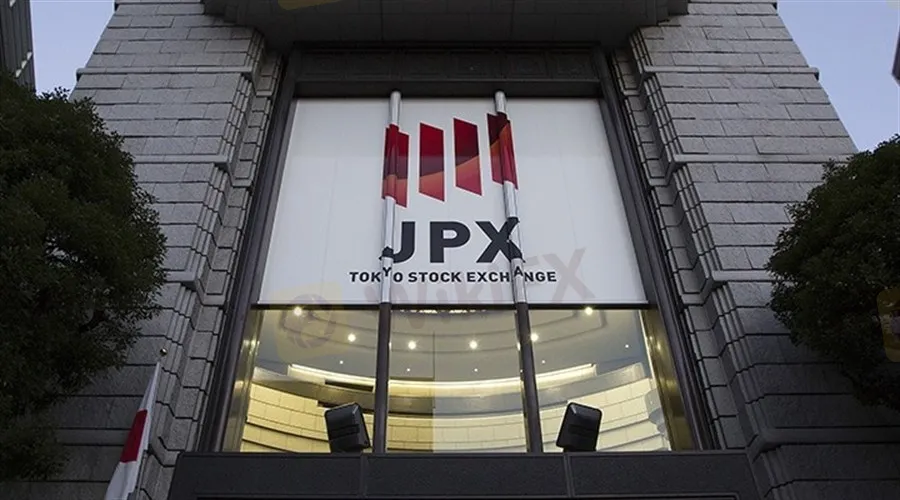简体中文
繁體中文
English
Pусский
日本語
ภาษาไทย
Tiếng Việt
Bahasa Indonesia
Español
हिन्दी
Filippiiniläinen
Français
Deutsch
Português
Türkçe
한국어
العربية
JPX Reports 2.3% Drop in FY22 Net Income, Keeps Forecast Bearish
Abstract:Japan Exchange Group (JPX), a major Japanese stock exchange operator and financial services company, announced its yearly financials for the financial year 2022, ending on March 31, showcasing contraction in some of the key performance parameters.

The revenue continued to grow, but marginally.
It is expecting FY23 revenue to shrink by 2.2 percent.
Take Advantage of the Biggest Financial Event in London.
The consolidated revenue for the 12 months jumped marginally by 1.6 percent. This figure came in at 135.4 billion yen compared to 133.3 billion yen. The exchange operator witnessed a massive decline in its growth as its revenue jumped by 7.8 percent in FY2021.
The operating income of the group for the period came in at 73.4 billion yen, which went down by 1.5 percent from the previous years 74.7 million yen. In addition, the net income declined by 2.3 percent to 50.8 billion yen.
In FY2021, JPX reported an 8.2 percent increase in its operating income and a 7.7 percent jump in the net income.
The Japanese group ended the year with 51.4 million yen, which was a 4.9 percent yearly decline. The basic earnings per share for the fiscal came in at 94.35 yen, compared to 96 yen in the previous year. Moreover, the return on equity dropped to 15.7 percent from FY2021s 16.6 percent.
Rewarding Shareholders
JPX already paid a dividend of 26 yen at the end of the second quarter. Now, the company has decided to pay another 46 yen to its shareholders, making the total yearly dividend 72 yen, higher than the previous years 68 yen.
The decline in the key financial metrics is going to continue, at least according to the groups estimations. In its forecast for FY2023, JPX is expecting to generate a revenue of 132 billion yen, which is 2.2 percent down, along with an operating income of 65.5 billion yen, which is a decline of 10.8 percent. Furthermore, the net income is expected to go down by 10.5 percent to 45.5 billion yen.

Disclaimer:
The views in this article only represent the author's personal views, and do not constitute investment advice on this platform. This platform does not guarantee the accuracy, completeness and timeliness of the information in the article, and will not be liable for any loss caused by the use of or reliance on the information in the article.
Read more

Will Inflation Slow Down in the New Year 2025?
Will inflation slow down in 2025? Experts weigh in on projections, economic policies, and potential impacts, offering insights into what the new year may hold.

New Zealand's FMA Warns Against "YouTube Crypto Investment Scam"
The Financial Markets Authority (FMA), New Zealand's financial regulator, warns individuals against investment scams that use YouTube channels to promote fraudulent cryptocurrency investment firms/websites. The authority explained on its official website how the YouTube cryptocurrency scam works, providing a step-by-step guide to help people recognize and avoid it. Read HOW THE SCAM WORKS and BE SAFE.

Trading is an Endless Journey
Every trader dreams of quick success, but rushing the process often leads to mistakes. It’s easy to get swept up in the excitement of winning trades or discouraged by unexpected losses. The truth is, mastering the emotional side of trading can be even more important than understanding market analysis or strategies.

How to Know if the Market is Correcting or Reversing?
In trading, distinguishing between a market correction and a market reversal is crucial for making sound decisions. Misjudging one for the other can lead to missed opportunities or significant losses. While both involve price movements, their causes, duration, and implications differ substantially. Understanding these differences can help traders improve their strategies and adapt to market conditions effectively.
WikiFX Broker
Latest News
Macro Markets: Is It Worth Your Investment?
Trading is an Endless Journey
What Impact Does Japan’s Positive Output Gap Have on the Yen?
RM62k Lost Investment Scam After Joining XRP Community Malaysia on Telegram
Victims of Financial Fraud in France Suffer Annual Losses of at Least €500 Million
SEC Warns on Advance Fee Loan Scams in the Philippines
Russia Turns to Bitcoin for International Trade Amid Sanctions
Rs. 20 Crore Cash, Hawala Network, Income Tax Raid in India
Hong Kong Stablecoins Bill Boosts Crypto Investments
BEWARE! Scammers are not afraid to impersonate the authorities- France’s AMF said
Currency Calculator


